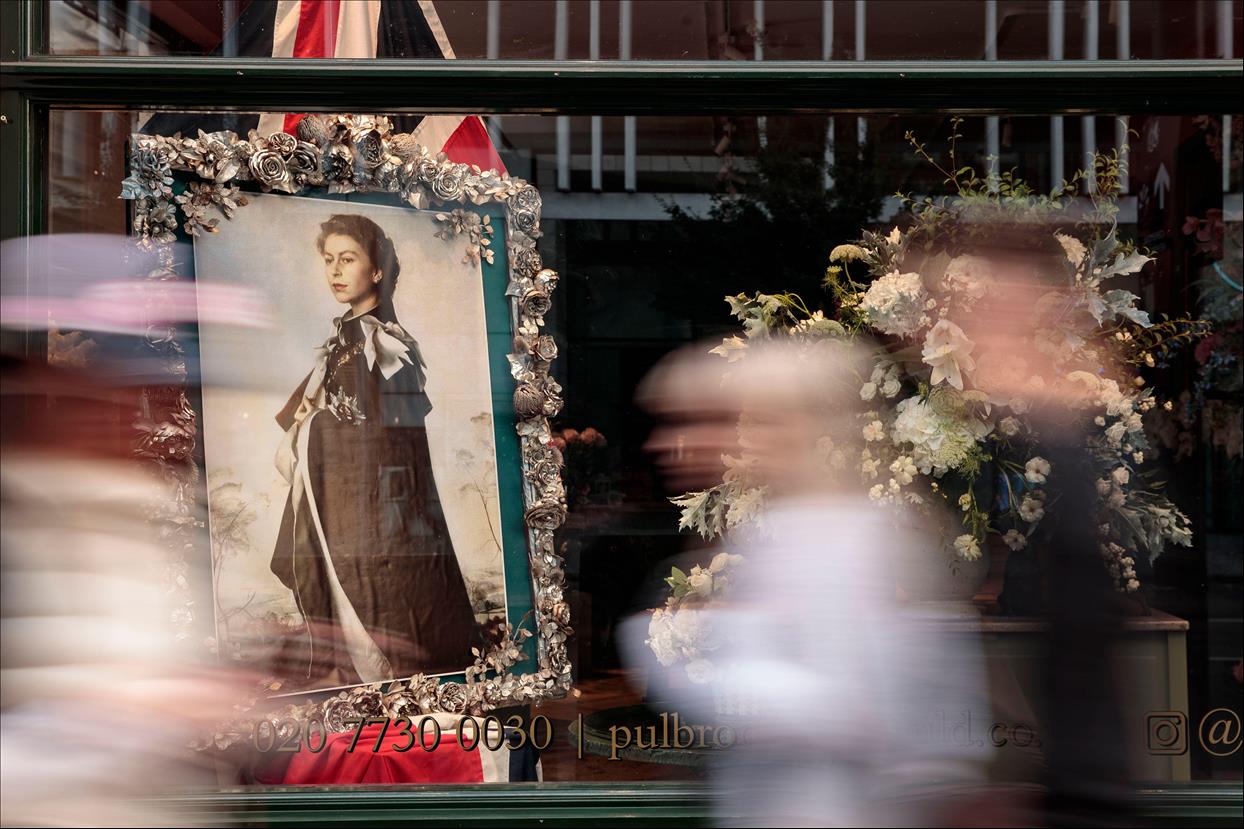
Queen Elizabeth II: The Politics Of National Mourning Left No Space For Dissenting Voices
After eleven days of national mourning following the death of Queen Elizabeth II, a full day of ceremonies brought the second Elizabethan era to a close. The official nature of this period – during which all political wrangling was cast to one side to allow the country to unite and grieve for the loss of the late monarch – was underlined by the administrative use of capital letters for“National Mourning”.
Drawing on traditions, rituals and protocols, the codified arrangements for what would happen when the Queen died and her son acceded to the throne as King Charles III, were dubbed operations London Bridge and Spring Tide respectively. They played out as a linear process, emphatically underlining the continuity of the monarchy. As such they differed in character from “collective grief” , the more social expressions of which are non-linear and spontaneous, incorporating myriad emotions, experiences and activities .
The focus on national mourning by large sections of the media, however, has left little or no room for a plurality of perspectives, whether that involved dissenting views on the monarchy or, simply, a fuller understanding of what collective grief actually means. This has arguably created a false impression of national consensus.
Demonstrators hold blank paper and banner to mark their right to protest, as Queen Elizabeth's coffin is taken out of St Giles' Cathedral, in Edinburgh, Scotland. Jeremy Sutton-Hibbert | Alamy Shared emotion
Collective grief can facilitate individual and communal grief, as well as community action. The Queen's death has indeed elicited numerous personal stories about a sense of shared emotion. Research speaks about parasocial grief – grief experienced for someone not known directly.
Many people have pointed, as reasons for their private mourning, to the Queen's longevity and stature as an historical anchor point for their own lives. Her death thus precipitates what social work expert Joan Beder has called a “loss of the assumptive world” : when an individual's core beliefs or worldview are challenged in the face of death and loss.
Cultural anthropologist Christina Jordan observes that from her coronation in 1953 the Queen became a familiar and domesticated presence largely through an astute use of the media. The televised coronation, the annual Christmas broadcasts and the many documentaries about everyday royal life all played a key role in establishing emotional bonds with the public.
As feminist writer and scholar Sara Ahmed has noted , this made of the Queen an“object of shared feeling”. She was the means by which the“national body” could bond in recognition of its own history.
However, this process has involved a particular form of revisionism. As the Commonwealth was reconfigured during the Queen's reign, so too were histories of empire, imperialism and colonialism.
It is in this context that the Queen's death has prompted such mixed reactions from former British colonies and member states of the Commonwealth. These views have elicited strong reactions and online racist abuse. As journalist Nadine White puts it:
Newspaper columnist Polly Toynbee has described the silencing of dissenting views as a form of intimidation and bullying. To her mind, right-wing sections of the press have contributed to a stifling of freedom of expression since the Queen's death. Other commentators with republican views have felt similarly unable to express them.
Research on collective grief indicates that it is experienced at different scales. For some it is related to other forms of personal grief. For others it is prompted by wider concerns about current political and social uncertainties. The end of a historical era can also invoke feelings of loss and nostalgia.
CAPTION. Gillian Pullinger | Alamy
Collective grief about the Queen might also include unresolved or disenfranchised collective grief resulting from the pandemic. But even when considering this echo, divisions here too become quickly apparent.
The UK COVID-19 inquiry has been delayed due to the national mourning period. Hospital appointments have been cancelled by several NHS trusts, despite the reported record levels of people waiting for treatment in the UK. And the news that some foodbanks would be closed on the day of the funeral came amid the cost of living crisis.
National mourning has been shaped by ceremonial functions across Britain's four nations. This can be read as an attempt to unify a country riven with divisions – civic, political, cultural and social.
Furthermore, there are already differences in the emotions expressed. Older people who might have mapped their own life experiences more closely to the Queen's have reported higher levels of grief than the so-called Generation Z. In fact, recent surveys by British Social Attitudes and YouGov have consistently shown a lack of interest in the monarchy among younger people.
Rather than achieving national consensus, the Queen's death has already highlighted several historical and social faultlines.

Legal Disclaimer:
MENAFN provides the
information “as is” without warranty of any kind. We do not accept
any responsibility or liability for the accuracy, content, images,
videos, licenses, completeness, legality, or reliability of the information
contained in this article. If you have any complaints or copyright
issues related to this article, kindly contact the provider above.


















Comments
No comment